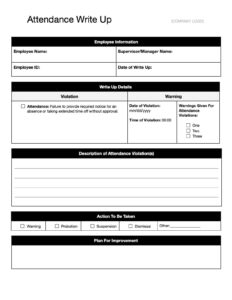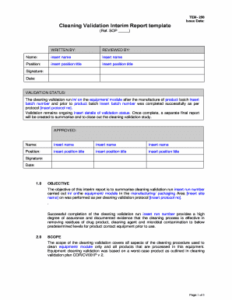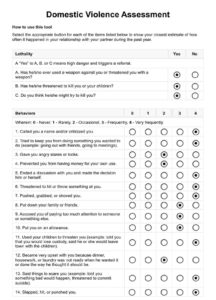Hiring someone to help manage your home, whether it’s for cleaning, childcare, or elderly care, is a significant decision. It’s a relationship built on trust and mutual respect, and like any professional arrangement, it benefits immensely from clear communication and defined expectations. While a handshake might feel personal and friendly, the reality is that a formal agreement provides a solid foundation for both the employer and the domestic worker.
This isn’t just about legalities; it’s about fostering a stable and fair working environment. A well-drafted contract ensures everyone is on the same page regarding duties, hours, compensation, and other crucial aspects of employment. It eliminates misunderstandings and provides a clear point of reference should any questions arise, making the working relationship smoother and more transparent for all involved.
Why A Formal Contract Is Essential For Domestic Workers and Employers
Entering into a domestic employment arrangement, whether you are the employer or the employee, comes with a unique set of responsibilities and expectations. While many might think a casual agreement is sufficient, the absence of a formal contract can lead to significant problems down the line. A properly constructed agreement serves as a protective shield, safeguarding the rights and duties of both parties and creating a professional framework for the relationship. It’s about preventing potential disputes before they even have a chance to emerge.
Without a written agreement, there’s a higher risk of misunderstandings regarding job scope, work hours, and even remuneration. What one person assumes, the other might interpret differently, leading to friction and dissatisfaction. This is particularly true for domestic work, which often blends personal space with professional duties, making clear boundaries even more critical. A contract clearly defines these boundaries, ensuring that both parties know exactly what is expected of them and what they can expect in return.
Furthermore, a comprehensive domestic worker employment contract template offers legal clarity. It outlines the terms of employment in a way that is legally binding, providing recourse for either party if the terms are not met. This is not to suggest an adversarial relationship, but rather to ensure that there is a documented understanding of the agreement, which is crucial for legal compliance and protection. It helps both employers and employees understand their rights and obligations under local labor laws.
Protecting Both Parties Legally
A formal contract acts as a safeguard. For employers, it clarifies the scope of work, ensuring the domestic worker understands their responsibilities and hours, which can prevent disputes over tasks not performed or overtime claims. For domestic workers, it protects against unfair dismissal, ensures agreed-upon wages and benefits are paid, and clarifies working conditions. It’s an indispensable tool for establishing a fair and transparent relationship.
Setting Clear Expectations
Ambiguity is the enemy of any good working relationship. A contract removes guesswork and ensures that both the employer and the domestic worker have a shared understanding of what the job entails. This includes everything from the specific tasks to be performed, the daily or weekly schedule, and the expected standards of work. It eliminates the "he said, she said" scenarios by having everything in black and white.
A well-detailed contract also addresses potential issues like sick leave, vacation days, and public holidays, preventing ad-hoc decisions that can lead to resentment. It creates a professional atmosphere where both parties feel valued and respected, knowing that their time and effort are recognized and compensated appropriately. This proactive approach ensures a harmonious working relationship from the outset.
Key Components To Include In Your Contract
Creating an effective domestic worker employment contract template requires careful consideration of various essential components. Each section plays a vital role in defining the terms of employment and protecting the interests of both the employer and the domestic worker. Skipping any of these elements can lead to gaps in understanding and potential future conflicts, undermining the very purpose of having a contract.
It is crucial to be thorough and precise when drafting these clauses. Remember that this document will serve as the primary reference point for any employment-related queries or disagreements. Therefore, taking the time to detail each aspect clearly will save a lot of trouble and maintain a healthy professional relationship throughout the employment period. Consider including the following key components:
- Identification of Parties: Clearly state the full legal names and addresses of both the employer and the domestic worker.
- Job Description and Duties: Provide a detailed list of all tasks and responsibilities expected of the domestic worker. Be specific about what the role entails.
- Work Schedule and Hours: Outline the agreed-upon working days, hours per day/week, and any provisions for overtime or flexible scheduling.
- Compensation and Benefits: Clearly state the hourly rate or salary, payment frequency, method of payment, and any other benefits like health insurance, food, or accommodation.
- Leave Policy: Detail policies for sick leave, annual leave, public holidays, and any other types of leave, including how they are accrued and requested.
- Confidentiality Clause: If applicable, include a clause that requires the domestic worker to maintain confidentiality regarding household affairs and personal information.
- Termination Clause: Specify the conditions under which the employment can be terminated by either party, including notice periods and severance pay if applicable.
- Dispute Resolution: Outline the process for resolving disputes or grievances that may arise during the course of employment.
Having a robust domestic worker employment contract template in place is not merely a formality; it is a fundamental step towards establishing a professional, respectful, and legally compliant working relationship. It acts as a compass, guiding both parties through their journey together, minimizing ambiguities, and fostering an environment of mutual understanding. By taking the time to outline all expectations and responsibilities upfront, you lay the groundwork for a successful and lasting partnership. This commitment to clarity ensures peace of mind for everyone involved.



